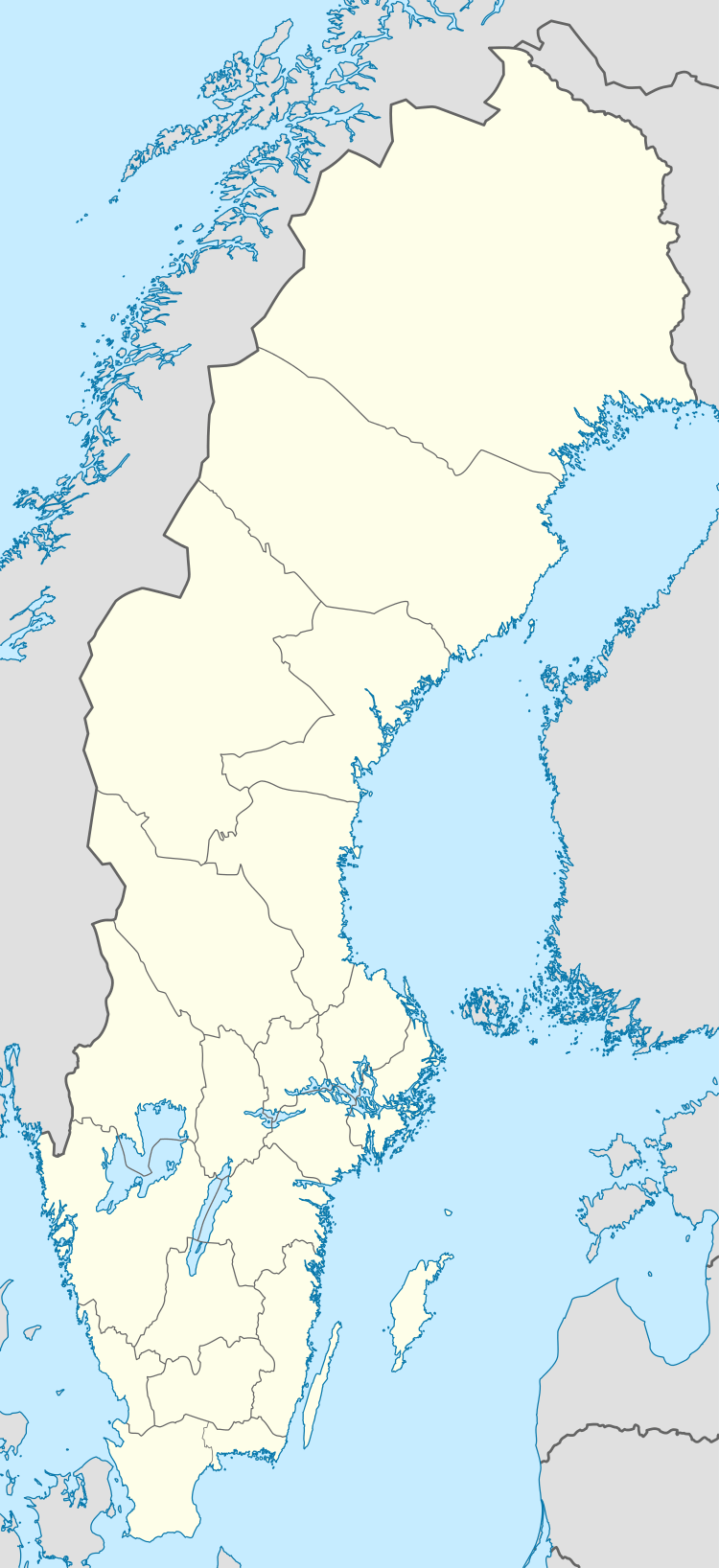Tidaholm
Tidaholm (![]()

Tidaholm | |
|---|---|
The hotel in Tidaholm. | |
 Tidaholm  Tidaholm | |
| Coordinates: 58°11′N 13°57′E | |
| Country | Sweden |
| Province | Västergötland |
| County | Västra Götaland County |
| Municipality | Tidaholm Municipality |
| Area | |
| • Total | 5.70 km2 (2.20 sq mi) |
| Population (31 December 2010)[1] | |
| • Total | 8,027 |
| • Density | 1,408/km2 (3,650/sq mi) |
| Time zone | UTC+1 (CET) |
| • Summer (DST) | UTC+2 (CEST) |
| Climate | Dfb |
History
Early Tidaholm was primarily agricultural. An ironworks factory was established in 1799 at the site of the Holmagarden forge. The ironworks were replaced in 1868 by a match factory. The Vulcan match factory eventually became the largest in the world. Today, the Lithographic Art Workshop in Tidaholm is in the former factory and carries on Tidaholm's tradition of the lithographic arts that began with designers of matchbox labels.
Tidaholm was detached from Baltak parish as a merchant town (köping) in 1895 and was made a city in 1910. It has been the seat of the much larger Tidaholm Municipality since 1974. Tidaholm is, despite its small population, for historical reasons normally still referred to as a city. Statistics Sweden, however, only counts localities with more than 10,000 inhabitants as cities.
Culture
The Tidaholm Museum houses various exhibitions. There are a art gallery at the Turbinhusön open in the summer and close to Hellidens folkhögskola you will find Swedens only Lithografic Museum
References
| Wikimedia Commons has media related to Tidaholm. |
- "Tätorternas landareal, folkmängd och invånare per km2 2005 och 2010" (in Swedish). Statistics Sweden. 14 December 2011. Archived from the original on 27 January 2012. Retrieved 10 January 2012.